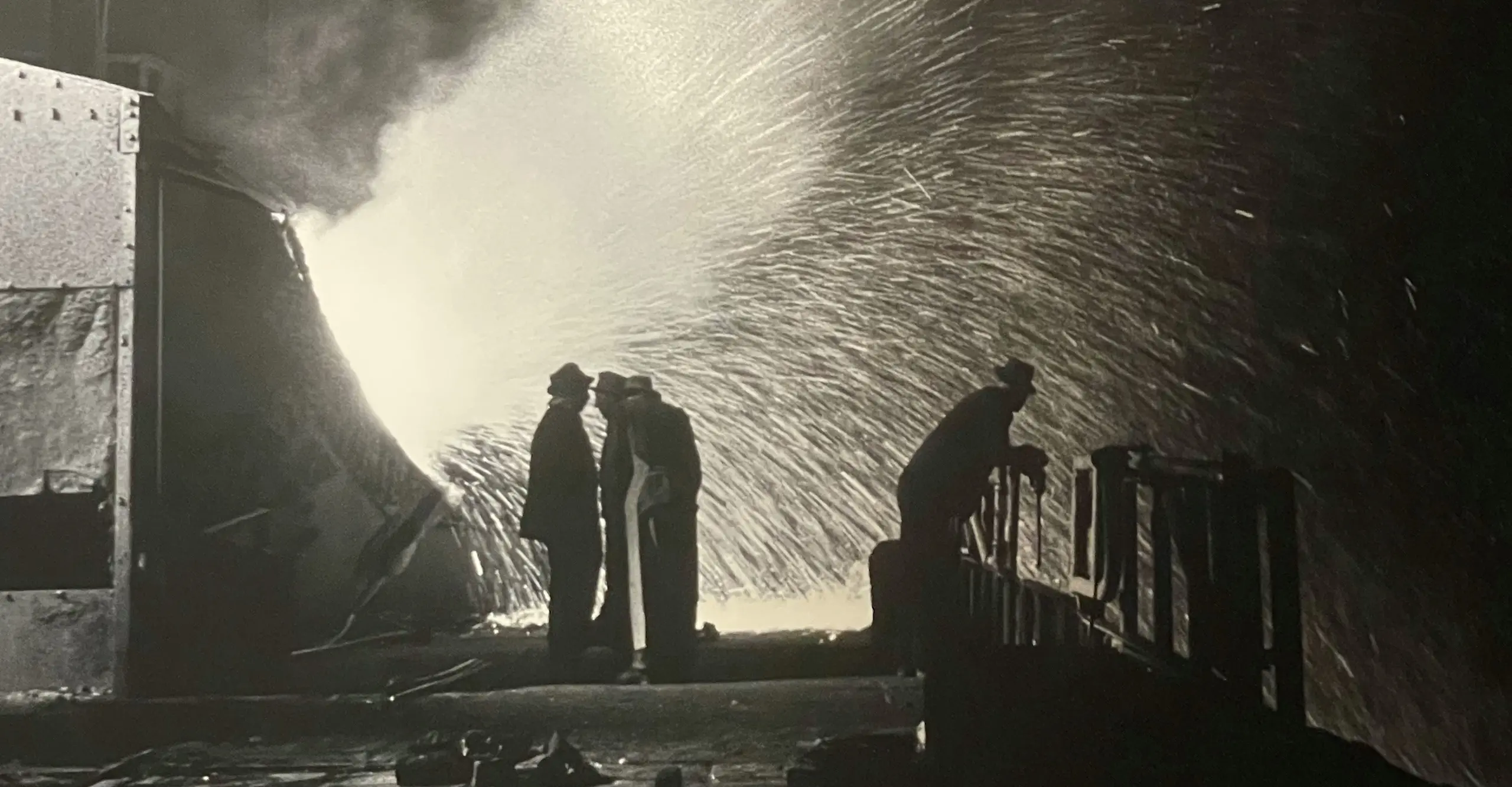Jenny reviews Maurice Broomfield: Industrial Sublime on show at the V&A Museum earlier this year.
Maurice Broomfield became an influential figure in industrial photography over the course of his career. His work explores the UK’s manufacturing industries and the local communities of workers that supported them. These are places that went through major changes during the rapid rise and decline in the 20th century’s post-war era industries. The Industrial Sublime exhibition at the Victoria and Albert Museum’s Photography Centre is comprised of the museum’s acquisitions from Broomfield’s archives. This body of work emphasises the romantic and surreal qualities of his photography.
The Victoria and Albert Museum is one of my favourite museums in London. I have enjoyed attending its diverse array of exhibitions – always insightful and powerfully captivating. Industrial Sublime is no exception. As I walked into the exhibition’s entrance, I was met with the foreword of the exhibition. I then read the contextual information which was spread throughout the gallery’s room – Broomfield was commissioned to take these photographs by major companies such as Shell or Ford in order to highlight each company’s technological advancements. The first photograph that caught my eye was Wire Manufacture (1964) which was taken in a Somerset factory. It depicts a factory worker, dressed in black, who is surrounded by incandescent sparks of light in the manufacturing process of producing wires.
A major highlight of this exhibition is Balancing a Ship Propeller (1956). It is a silver gelatin print, showing a factory worker holding the edge of a ship’s propeller. In his diaries, Broomfield reflected positively on his photograph, “This is one of the most beautiful and tactile pieces of industrial sculpture... The buffing marks added a lot. They were the final signatures on works of industrial art.” A further highlight in the exhibition is Tapping a Furnace (1954), which conveys the magnitude of industrial furnace factories. The photograph shows the silhouette of a lone factory worker – set against the fiery backdrop of a blazing furnace – as he supervises molten metal being used for steel production. My favourite photograph in the exhibition was the North Sea Rig (1967). It is black and white, depicting a shadowy figure walking by the oil rig Orion at night time. I found it interesting because the oil rig’s dramatic flare looks like a reflection of moonlight.
The exhibition also focused on the legacy of Broomfield’s archives. This is because most of the factories and their communities of workers that were photographed by Broomfield have either been subsumed into global companies or disappeared entirely. The exhibition’s foreword noted that, “Broomfield chose to illuminate the strength and sensitivity of individuals in factories. His archive survives as a valuable record of this vanished history.” Hence, Broomfield’s work has retained its relevancy to modern society by capturing these historical moments. It also poses questions about the impact of rapid industrial changes on communities, and about the UK’s place within the global economy.
Overall, I enjoyed viewing Broomfield’s photographs and feel would be of importance to those with an interest in industrial photography and British history in the mid to late 20th century.
